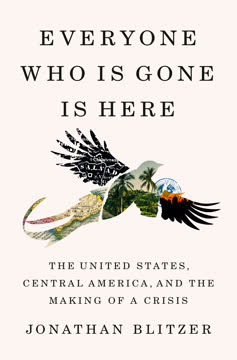Key Takeaways
1. US Intervention and the Genesis of Migration
Rather than cleaving apart the worlds of the US, El Salvador, Guatemala, and Honduras, the Americans were irrevocably binding them together.
Cold War entanglement. For decades, US foreign policy in Central America, driven by Cold War anti-communism, directly fueled the region's instability and subsequent migration. From arming repressive regimes in El Salvador to orchestrating coups in Guatemala, American actions created the very conditions people fled. This included:
- Supporting military forces that committed widespread human rights abuses.
- Defining "insurgency" as any opposition to existing governments, even peaceful reform movements.
- Training and equipping security forces that became notorious for torture and extrajudicial killings.
Roots of displacement. The 1932 La Matanza in El Salvador, where 30,000 peasants were slaughtered, set a precedent for state terror, freezing the country in fear for decades. Later, US military aid to El Salvador and Guatemala, often rationalized as "nonlethal," equipped forces that became "even more violent in repressing the people." This direct link between US policy and regional violence created a continuous flow of refugees.
Unintended consequences. The US Refugee Act of 1980, while codifying asylum law, paradoxically supplied a pretext for denying claims from Central Americans fleeing US-backed regimes. This created a "policy chaos" where geopolitical interests, not humanitarian principles, dictated who received protection, irrevocably binding the fates of these nations.
2. Sanctuary: A Moral and Legal Frontline
Obedience to God requires this of us all.
Challenging unjust laws. The Sanctuary Movement emerged in the 1980s as a direct response to the US government's refusal to grant asylum to Central Americans fleeing violence. Churches, led by figures like John Fife and James Corbett, openly declared themselves "sanctuary" spaces, providing shelter and legal aid to undocumented migrants, often at great personal risk. This was seen as a moral imperative, echoing historical movements like the Underground Railroad.
Activism and advocacy. Activists like Margo Cowan and Lupe Castillo used legal strategies to challenge the system, filing hundreds of asylum applications despite high rejection rates, primarily to prevent deportations. They exposed practices like "voluntary departure" forms, which migrants unknowingly signed, waiving their rights. The movement aimed to "push the law to the limits" and define success by getting clients out of custody, not necessarily winning asylum cases.
Public awareness. The movement strategically used media attention to highlight the plight of refugees and the contradictions of US policy. Figures like Fife and Corbett became public faces, appearing on national news shows like 60 Minutes, forcing a national conversation about human rights abuses in Central America and the government's complicity.
3. Deterrence and the Human Cost of US Immigration Policy
We simply cannot have a situation where if you cross the border and are apprehended, you can count on being escorted to the nearest bus station.
"Prevention through deterrence." In the 1990s, US border policy shifted dramatically with initiatives like Operation Blockade, aiming to deter crossings by funneling migrants into remote, dangerous desert areas. This strategy, later expanded to Operation Gatekeeper and Safeguard, prioritized fewer arrests as a measure of success, even as it led to more migrant deaths. The underlying premise was to make the journey so perilous that people would stop trying.
Family separation as policy. The "zero tolerance" policy under the Trump administration explicitly aimed to deter migration by separating children from their parents at the border. This brutal tactic, initially piloted in El Paso, was designed to inflict maximum pain, with officials believing it would send a strong message back to Central America. The government's own records showed a deliberate intent to separate families, despite public denials.
Bureaucratic cruelty. The implementation of deterrence policies revealed profound systemic failures and human costs.
- Parents were charged with misdemeanors for illegal entry, leading to their separation from children.
- Government records were so disorganized that reuniting families became "virtually impossible."
- Children were held in "hieleras" (cold cells) and later in shelters, often without clear information about their parents' whereabouts.
- Parents, like Keldy, were forced to sign documents relinquishing custody or agreeing to deportation without their children.
4. The Transnational Evolution of Gangs
The New Thing had symbolism. It had music. It had money. You throw in a couple of movies—and it’s just brainwashing. Then throw in a couple of songs from Cypress Hill. Cypress Hill fucked everyone up over here.
LA's gang crucible. In the 1980s and 90s, Los Angeles became a breeding ground for transnational gangs like MS-13 and 18th Street. Central American youth, often refugees, found themselves in a brutal racial hierarchy, caught between Black and Chicano gangs. MS-13, initially a band of outcasts, distinguished itself by its "ecumenical Latino identity" and extreme violence, often using machetes.
Deportation as proliferation. US deportation policies, particularly the 1996 Illegal Immigration Reform and Immigrant Responsibility Act (IIRIRA), inadvertently transformed local LA street gangs into international criminal networks. Thousands of hardened criminals, many with extensive records, were deported to Central American countries ill-equipped to receive them.
- El Salvador, recovering from civil war, had a weak police force and abundant military weaponry.
- Deportees, like Eddie's friend Duke, established LA-style cliques in their home countries.
- The "New Thing" of American gang culture, with its music, style, and perceived power, became a potent draw for local youth.
A new civil war. The transplanted gang rivalries mutated into something "even more violent and ungovernable" in Central America. Gangs extorted businesses, controlled neighborhoods, and engaged in widespread violence, often targeting deportees themselves. The "arcane logic" of this new conflict created a pervasive climate of fear, where:
- National ID cards, listing home addresses, became a liability, marking individuals for scrutiny.
- Deportees were viewed with suspicion by locals, further isolating them.
- The violence became so normalized that call centers, like Sykes ("homieland"), became major employers for English-speaking deportees, offering a precarious refuge.
5. Immigration as a Political Weapon
This isn’t a campaign. This is a movement.
Trump's rise. Donald Trump's 2016 presidential campaign fundamentally reshaped American immigration politics, making anti-immigrant rhetoric a central, winning platform. He galvanized voters by blaming immigrants for economic woes, crime, and national insecurity, tapping into a "rich vein of American outrage." His rhetoric, often described as "slapdash histrionics," resonated with a segment of the electorate.
Ideological architects. Figures like Senator Jeff Sessions and adviser Stephen Miller provided the intellectual and strategic backbone for Trump's immigration agenda.
- Sessions, a long-time anti-immigration hardliner, saw Trump as a vehicle for a "humble and honest populism."
- Miller, a "walking encyclopedia" on immigration policy, crafted aggressive executive orders and policy blueprints, often bypassing traditional bureaucratic channels.
- Their goal was not just to control the border but to "divide and conquer the electorate" by demonizing immigrants and their liberal defenders.
Weaponizing fear. The administration consistently used inflammatory language and exaggerated threats to justify its policies.
- Migrants were labeled "rapists," "gangsters," and "animals."
- MS-13, a relatively small gang, was elevated to a national security threat, eclipsing other policy discussions.
- The "specter of immigrant crime" was used to justify harsh enforcement, even when crime rates were generally declining. This strategy proved politically potent, as seen in the 2014 California Proposition 187 and the 2016 election results.
6. Bureaucracy's Grip: Policy, Discretion, and Dysfunction
The system works. It works slowly, but that’s not the fault of the system. It’s the fault of the people who use it.
A system in disarray. The US immigration system, particularly the INS (later DHS), was consistently understaffed, underfunded, and ill-equipped to handle the complexities of migration. From the "chaos of Mariel" to the "disarray" of the asylum system in the early 90s, the bureaucracy struggled with:
- Massive backlogs of asylum cases, leading to years-long waits.
- Inconsistent application of laws, with asylum decisions often influenced by geopolitics rather than humanitarian principles.
- A lack of coordination between agencies, leading to systemic failures like the inability to track separated families.
The illusion of control. Despite massive budgets and increased personnel, the government often operated with an "illusion of control." Policies like "prevention through deterrence" were based on flawed assumptions and led to unintended consequences. The 1996 IIRIRA, intended to curb illegal immigration, instead trapped millions in the US, doubling the undocumented population.
Internal resistance and external pressure. Career officials like Doris Meissner often found themselves caught between political directives and the realities on the ground.
- Meissner, as acting INS commissioner, witnessed the agency's "mixed signals" and "double standard" in asylum cases.
- Her efforts to reform the system were often met with resistance or dismissed as "the Big Red Book."
- The Trump administration's "deep in the building" calls and purges further politicized the bureaucracy, forcing officials to operate in "classified security bunkers" to shield their work.
7. The Relentless Pursuit of Justice and Accountability
Everyone who is gone is here.
Confronting impunity. The fight for justice for victims of Central American conflicts extended beyond national borders, reaching US courts. Human rights organizations, like the Center for Justice and Accountability, used international law to pursue civil cases against former military officials living in the US. This was a novel approach, as perpetrators often found refuge in the very country that had supported their regimes.
Personal testimony as power. Victims like Juan Romagoza, Neris González, and Carlos Mauricio bravely testified against their torturers, including former Salvadoran generals José Guillermo García and Carlos Eugenio Vides Casanova. Their detailed accounts, often reliving horrific traumas, aimed to establish "command responsibility" and bring accountability where national amnesty laws had failed. Juan's testimony, particularly his physical display of scars, was a powerful act of reclaiming his narrative.
A long grind. The pursuit of justice was a protracted and often dangerous process.
- Helen Mack's relentless campaign for her murdered sister, Myrna, in Guatemala, took years and faced constant threats and assassinations of witnesses.
- The Myrna Mack Foundation became a beacon for human rights, exposing military abuses and pushing for institutional reform.
- Even when convictions were secured, like that of Noel de Jesús Beteta Álvarez, the "intellectual authors" often evaded justice, highlighting the deep-seated impunity within the military and political elite.
8. Climate Change: A Silent Driver of Displacement
If the rains don’t come at a predictable time, how do you know? These crops are for survival. If there aren’t crops, people leave.
Environmental devastation. Beyond political violence and economic hardship, climate change emerged as a significant, yet often overlooked, driver of migration from Central America. In regions like Guatemala's western highlands, communities dependent on subsistence farming faced existential threats.
- Hurricane Mitch (1998) caused $6 billion in damage in Honduras, destroying crops and infrastructure.
- In Guatemala, "unpredictable rainfall," "unexpected surges in heat," and "morning frosts" decimated harvests.
- Grain and vegetable yields, once sufficient for a year, now lasted less than five months, leading to famine-like conditions.
Vulnerability of the highlands. The Guatemalan highlands, with their unique microclimates and high rates of malnutrition, were identified as "the most vulnerable area in the country to climate change." This environmental precarity directly translated into increased migration.
- Farmers, like Feliciano Pérez, witnessed entire harvests wiped out, forcing neighbors to abandon their land.
- Villages saw a proliferation of "casas de remesa" (remittance houses), built with money sent from migrants in the US, symbolizing a future that few owners would return to inhabit.
- Water shortages became critical, with communities like Agua Alegre having water available only two days a week for limited hours.
Policy blind spots. Despite reports cautioning lawmakers that "inattention to these issues" would drive "more migration to the United States," US policy largely failed to address climate-induced displacement. The focus remained on border enforcement, overlooking the root causes that compelled people to leave.
9. The Cycle of Violence and the Search for Stability
You just can’t live there anymore.
Post-coup instability. The 2009 coup in Honduras, which ousted President Manuel Zelaya, plunged the country into a new era of lawlessness and political instability. Despite US officials acknowledging the coup's illegitimacy, the US eventually accepted the outcome, prioritizing a "security partner" over democratic principles. This created a "tinderbox" where:
- Security forces killed demonstrators during protests.
- A new conservative order consolidated power, undermining democratic institutions.
- The coup unleashed a wave of violence, with Keldy's family experiencing multiple murders and threats.
The "Mano Dura" paradox. Governments in Honduras and El Salvador adopted "Mano Dura" (Strong Hand) policies, relying on military and police sweeps to combat gangs. While popular with voters, these policies often led to:
- Mass arrests, including innocent people based on appearance or association.
- Exploding prison populations, which paradoxically consolidated gang power by allowing leaders to orchestrate operations from within.
- Increased violence, as gangs adapted and retaliated, leading to record homicide rates.
A desperate exodus. The pervasive violence and lack of institutional protection forced families like Keldy's to make impossible choices. After multiple family murders and direct threats, Keldy and Mino fled Honduras, risking the perilous journey on "the Beast" freight train and facing kidnapping by cartels. Their decision reflected a widespread sentiment: "You just can't live there anymore."
10. Reunion and the Enduring Quest for Home
I’m returned to life.
The long road to reunion. For families separated by US immigration policies, the path to reunion was arduous and protracted. Keldy, separated from her sons for nearly two years, navigated a complex bureaucratic maze, relying on lawyers and her own relentless advocacy. Her sons, Erick and Patrick, faced their own challenges in the US, including bullying and depression, highlighting the deep trauma of separation.
Advocacy and legal battles. The efforts of advocates and legal organizations, like the ACLU's class-action lawsuit (Ms. L. v. ICE), were crucial in forcing the government to acknowledge and address family separations. These legal battles compelled the government to:
- Identify and track separated families, a task it initially failed to do.
- Establish deadlines for reunification, though these were often missed.
- Eventually, under the Biden administration, create a federal task force dedicated to family reunification.
A fragile new beginning. Keldy's eventual return to her children in Philadelphia, facilitated by humanitarian parole, marked a deeply emotional reunion but also a precarious new beginning. The parole offered temporary protection but not a permanent path to legal status, reflecting the ongoing challenges in US immigration policy.
- The Biden administration, while condemning Trump's policies, still grappled with the political and logistical complexities of the border.
- The debate over Title 42, a pandemic-era expulsion policy, underscored the persistent tension between humanitarian concerns and political expediency.
- For families like Keldy's, the quest for a stable, permanent home in the US remained an "enduring grind," a testament to their resilience in the face of systemic obstacles.
Last updated:
Review Summary
Everyone Who Is Gone Is Here is a comprehensive, meticulously researched book on Central American immigration to the US. Blitzer weaves personal stories with historical and political analysis, tracing the roots of the crisis to US foreign policy and internal conflicts. Readers praise its depth, empathy, and ability to humanize a complex issue. Some found it emotionally challenging and lengthy, but most consider it essential reading for understanding the current situation. The book covers decades of policy failures, violence, and the human cost of migration, offering no easy solutions but raising important questions.
Similar Books


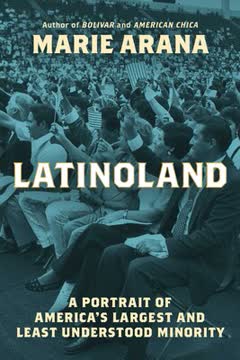
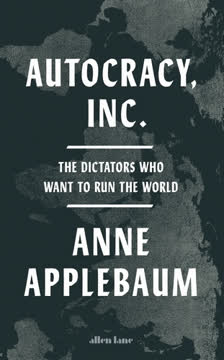
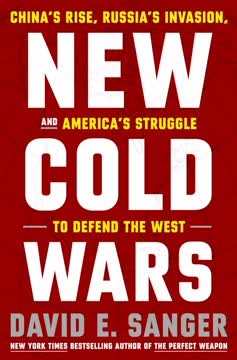
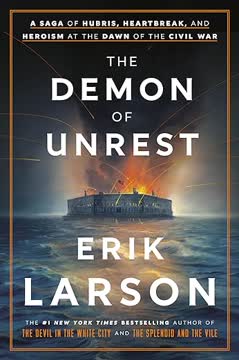
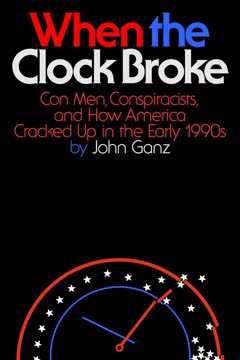

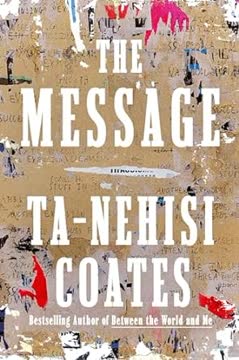
Download PDF
Download EPUB
.epub digital book format is ideal for reading ebooks on phones, tablets, and e-readers.
